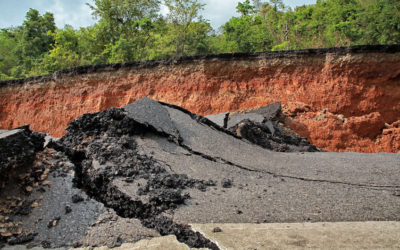It’s that time of year again, when the analysts analyze and publish the Gartner Magic Quadrant insight into products and solutions ahead of a calendar year budget cycle. This is for good reason, although Gartner recommends against buying solely based on what is farthest top and right, stating that niche and visionary products may be extremely well-suited for a company’s needs. Veeam Software is an unusual participant in the quadrant, given that they entered it in the visionary section, and were the first company to do so with only a virtualization offering, being “built for virtualization.” All the other companies had solutions to protect physical environments or were created to protect physical and then bootstrapped or developed into the virtual space.
One of the items that rings true to customers of all sizes is the ease of implementation and use of the products. Complex implementation and management/maintenance of products translates to more overhead and dollars (e.g., higher TCO, higher risk) and has remained a pain point for many products. Again, Veeam has remained the exception, with ease of implementation and use being a core consideration for customers. Implementation costs are lower, ongoing realized costs remain lower, yet satisfaction and the “wow, this actually works” factor remains high.
Since their first appearance on the Magic Quadrant, Veeam has continued to innovate and be thought and product leaders in the market. Veeam has been a “backup and replication” product since early on, while most products were simply labeled “backup and recovery.” I always found this a bit odd, because if you couldn’t recover a backup, then what good was it? The bigger “a-HA!” for Veeam came when customers learned they could actually recover entire virtual machines—successfully, mind you—within minutes. Gartner took notice.
Fast forward a few years, and cloud offerings for offsite data storage became the new buzzwords. Cloud capabilities became a new measure in the MQ. Why should companies spend the money on Disaster Recovery equipment and multiple locations when they could easily write data to the “cloud” and let the “cloud people” deal with it? The major “cloud” companies began clawing and scratching and innovating, but for many customers, it still comes down to a few items: cost, ease of use, and reliability (we’ll throw service and support in there as part of it.) Customers quickly realized the “cloud” can be a bit, well, cloudy. It is easy to have a “throw more storage at it” attitude, because that generates revenue. Many customers suffered with costs related to restoring data, and the help they received from the cloud provider, especially if the bandwidth or data limits had been met or exceeded according to contracts.
At Global Data Vault, we realize the pain points of something that should be easy and cheap, and maybe a little magical. We adopted the Veeam messages of “it just works” and “always on” and added our own: It’s always our problem. We make offsite data storage for both backed up and replicated virtual machines easy. By utilizing Veeam Software, one of Gartner’s leaders, we guarantee service and delivery our customers expect, all with simple and transparent billing and reporting. With lower overhead and lower TCO, Global Data Vault excels in satisfaction and providing a truly customer-centric cloud experience.
More Backup and Disaster Recovery Posts
Congratulations Due at Fannie Mae
USA Today is reporting that a plot to destroy data at Fannie Mae was uncovered and is being prosecuted. In this case it was a fired employee named Rajendrasinh Makwana. His plan was to insert a virus to attack and destroy data at the government chartered mortage...
Business Continuity Planning – Vital Emergency Supplies
Vital Emergency Supplies There is never a good time for an emergency, but in the event of an untimely disaster your company must have much more than a basic first-aid kit on hand. In regard to emergency supplies, it's important to let workers know just what will be...
Business Continuity Risk Assessment
Preparing for Threats through Risk Assessment A successful business continuity plan involves preparing for the unexpected. No one ever wants to overindulge in negativity, yet it is only practical to be realistic in this day and age of untimely disasters. A major...
Budgeting for Disaster Recovery
Strategic budgeting ensures availability of essentials in the event of a disaster Understanding all the changes that could become an integral part of daily business operations is vital to the success of any business continuity plan. It is important for the management...
Data Backup vs Data Storage Archives
Online data storage comes in two main flavors: data backup and data storage archive. Which is right for you? What is Data Backup Data backup is a regularly scheduled update of local data to the offsite server. It also provides retention of older versions of the local...
7.8 Magnitude Shakeout Earthquake Drill
What would you do if your neighborhood was struck by a 7.8 magnitude earthquake? Well, today the citizens of Southern California might have a better idea of what they would do after yesterday's United States Geological Survey's (USGS) shakeout earthquake drill. USGS...
Natural Disaster Threat Maps
Inspired by the series of minimal earthquakes we've experienced in Dallas over the past 2 days, I have compiled a list of maps showing the level of threat faced across the United States from the following naturally occurring threats: Earthquake Flood Hurricane...
mJobTime Systems: Server Backup enabled production through Hurricane Rita
In September 2005, less than one month after Katrina, Hurricane Rita loomed on the horizon, threatening an already tattered Gulf Coast economy. But well before knowing when his Business Continuity Plan would be put to the test, Mike Soniat, President of mJobTime...






0 Comments